Combining Sets Challenge Activity
This blog post contains Amazon affiliate links. As an Amazon Associate, I earn a small commission from qualifying purchases.
I want to share a combining sets challenge activity I created for my Algebra 2 students.
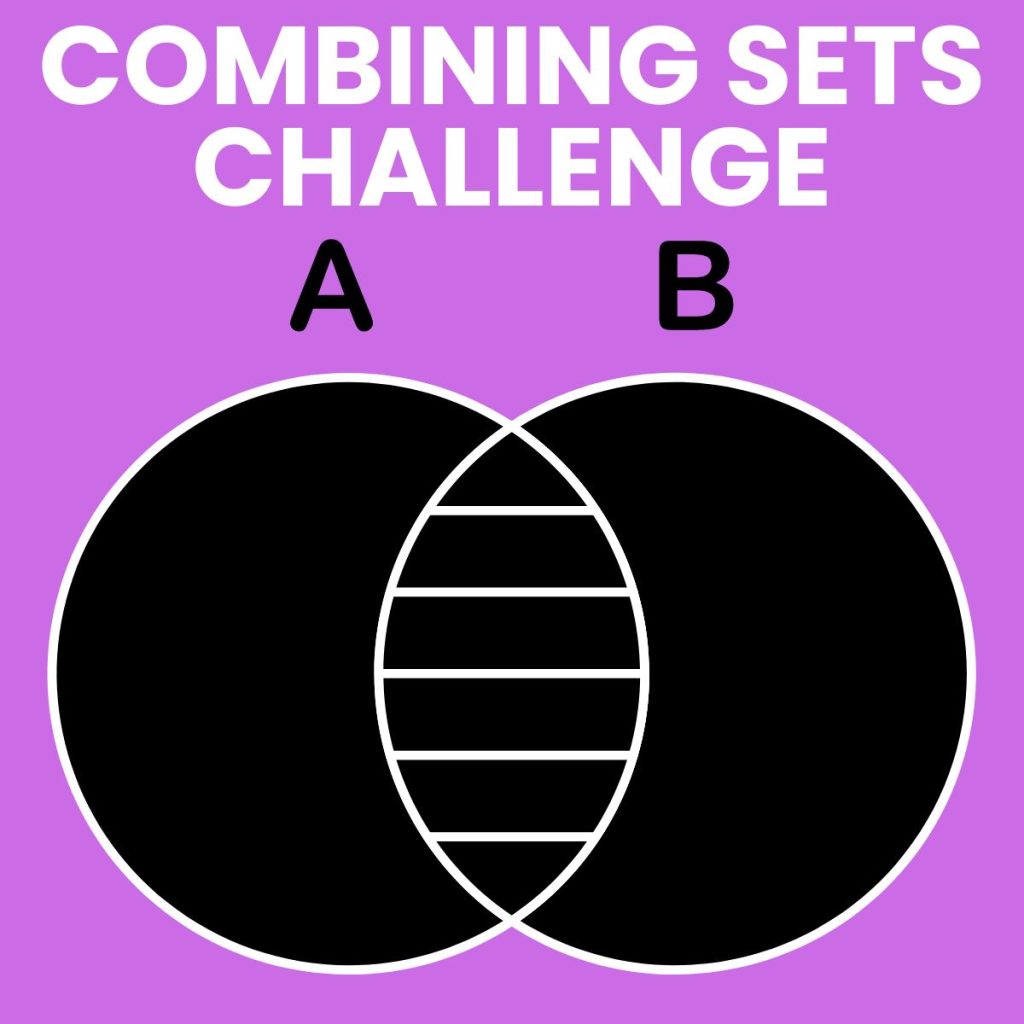
My brain has finally started letting me think about next school year. Of course, I’m not thinking about it TOO much yet. For one thing, this school year is still ongoing, at least for a couple more weeks. Due to COVID-19, our students’ last day is May 8th. We started distance learning on April 8th. It doesn’t feel like real teaching, though, because I’m so limited in the scope of what I can do. Then, there’s also the fact that I don’t know exactly 100% what I’m teaching next year. I don’t want to get too enthused with planning and end up creating resources for a course I’m not teaching.
I’m pretty sure I’ll still be teaching Algebra 2 next year, though, so I’ve been flipping through what we did this year to get my mind thinking about what worked and what could use some major tweaking. This year, I used the fill-in-the-blank Algebra 2 notes that my husband wrote last summer that are 100% aligned to the Oklahoma Standards. (Because OK decided to trash common core before ever actually teaching common core, it’s hard to find things that actually align to what the state says we’re supposed to be teaching. Don’t get me started on the textbooks my district adopted that claimed to be Oklahoma aligned…)
Sadly, I didn’t get to teach all the way through Shaun’s Algebra 2 notes. But, I loved the lessons that my students did get to experience. This set of notes is incredibly cohesive and well-thought-out. I feel like I understand mathematics more deeply as a result of working through them. And, this is coming from someone with a degree in mathematics. I’ve always looked at Algebra 2 as a very choppy subject. It’s always felt like a mish-mash of all the topics that we want to fit in while students are still in high school. This year (my sixth year teaching Algebra 2) was the first time I’ve ever really felt like I was teaching a well-rounded subject and not a thrown together at the last minute course.
That was the good. The not so good? Shaun’s Algebra 2 Notes/Curriculum is quite unlike most other curriculum resources you can find here in the United States. (I guess that’s what happens when you take someone who was educated in Australia where maths class looks entirely different from the US and let him put his own spin on the Oklahoma Algebra 2 standards.) It was hard to find practice assignments and activities that were of the same rigor as the notes. And, it was a year-long frustrating experience trying to write satisfactory assessments. Ideally, I would have unlimited time to write my own assessments (with five different versions and five different answer keys). Sadly, I still haven’t figured out that unlimited time aspect. So I did my best to find pre-written questions that matched up in the test banks I have access to. Each assessment, though, left me feeling completely unsatisfied and wanting to rip it to shreds and start over. As a result, I feel like quality assessment is an area that I really dropped the ball in this year.
I ended up making a few new activities here and there, but this was hard to do with a baby at home. Again, how amazing it would be to have unlimited time… What few activities I did make, I never got around to blogging about. That’s what I’m here to try and start remedying today. Then, I can hopefully start making some new activities for next year!
Instead of beginning Algebra 2 with the traditional Algebra 1 review, Shaun takes a different approach and jumps straight into some basic set theory. We learned enough new symbols to boggle my students’ brains for a few days.
We tackled element/not an element notation.
We discussed the subsets of the Real Number System and their fun symbols.
And, we found the intersection, union, and difference of various sets.
I knew at this point that my students were going to be in definite need of some practice with all these new symbols. This led to the creation of my Combining Sets Challenge.
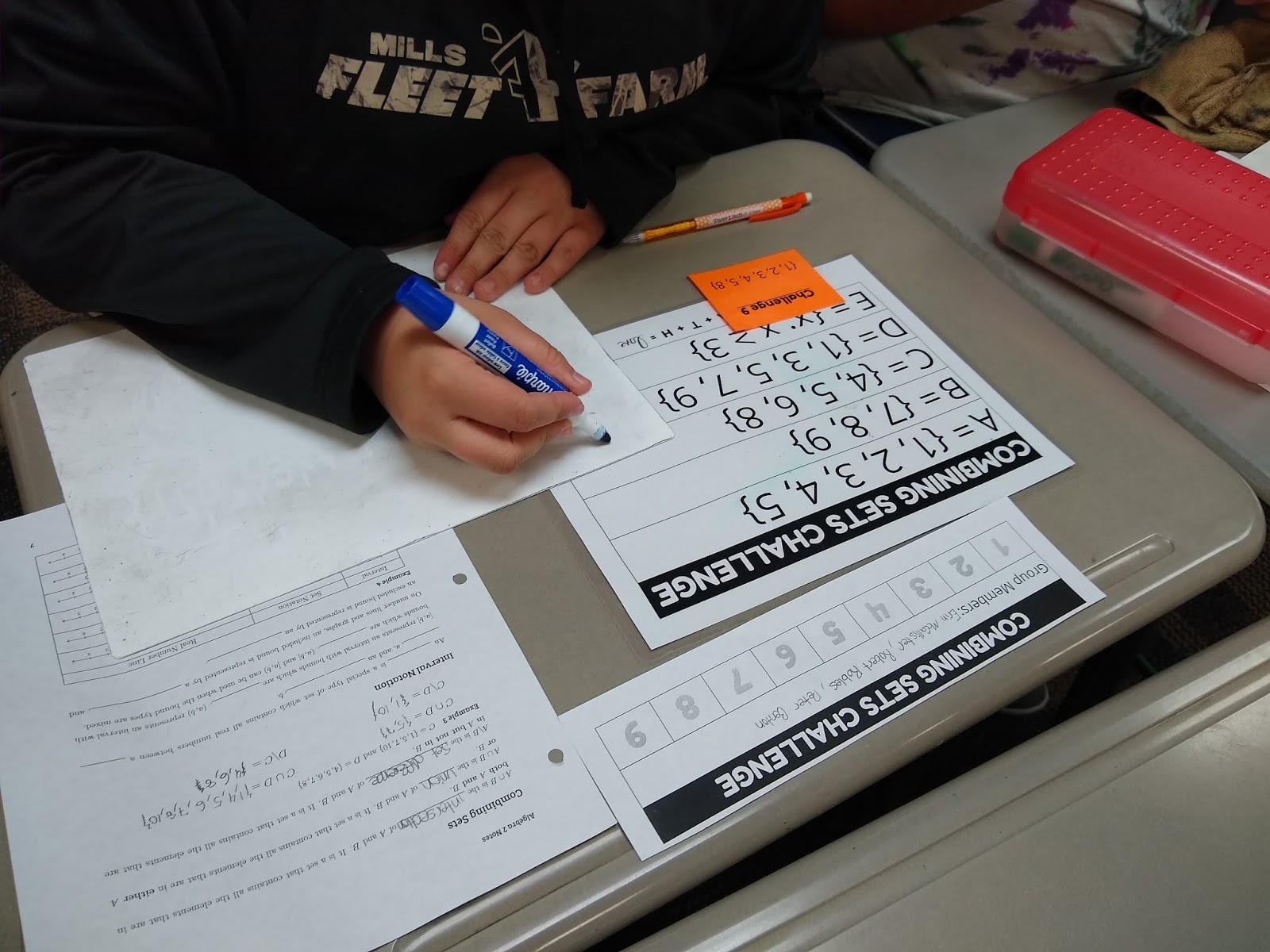
This combining sets group activity involves nine separate challenges where students must figure out how to combine the given sets A, B, C, D, and E using intersection, union, and set difference symbols to create nine new sets of numbers.
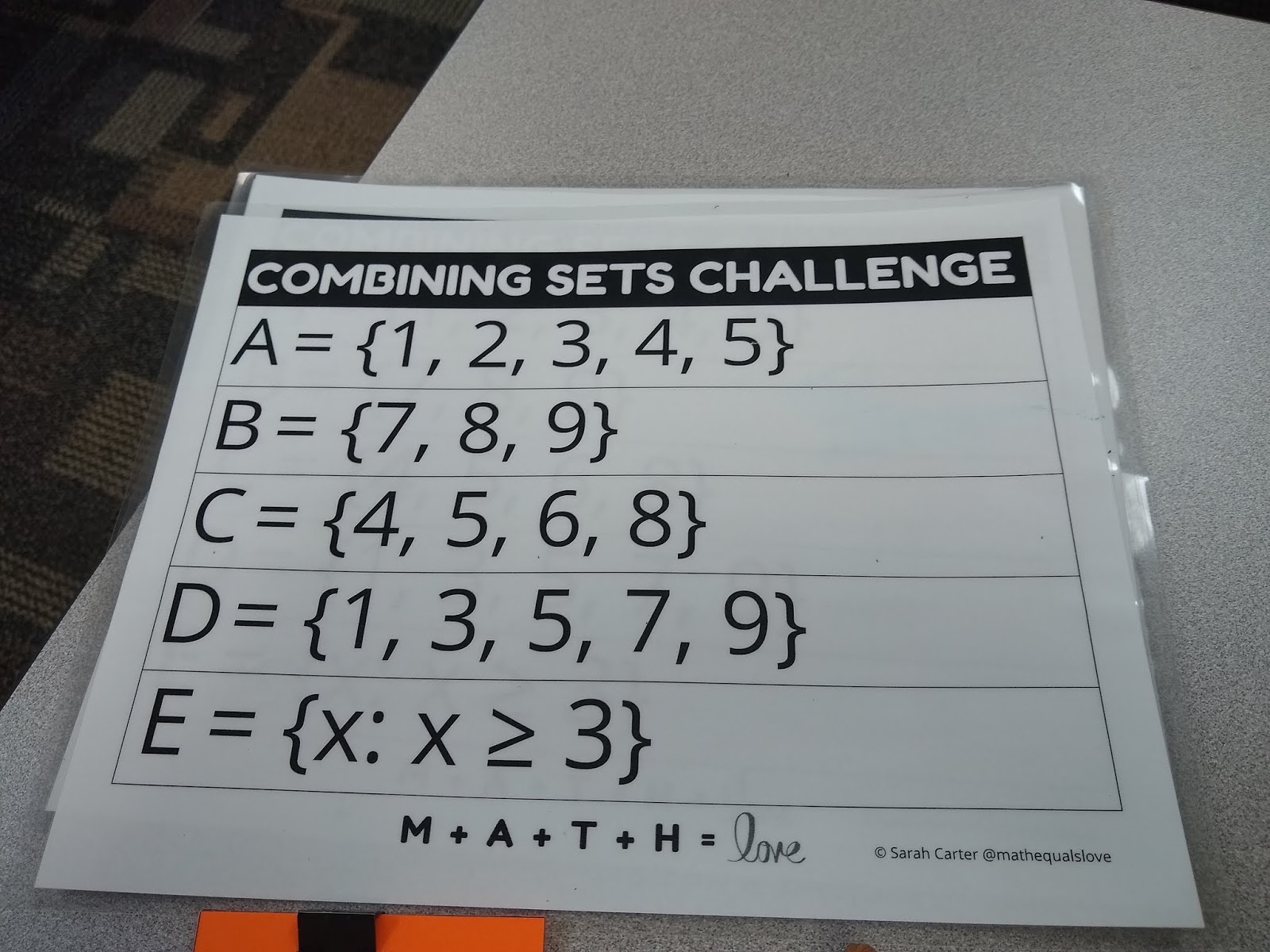
Each group is given a laminated sheet of paper defining sets A through E.
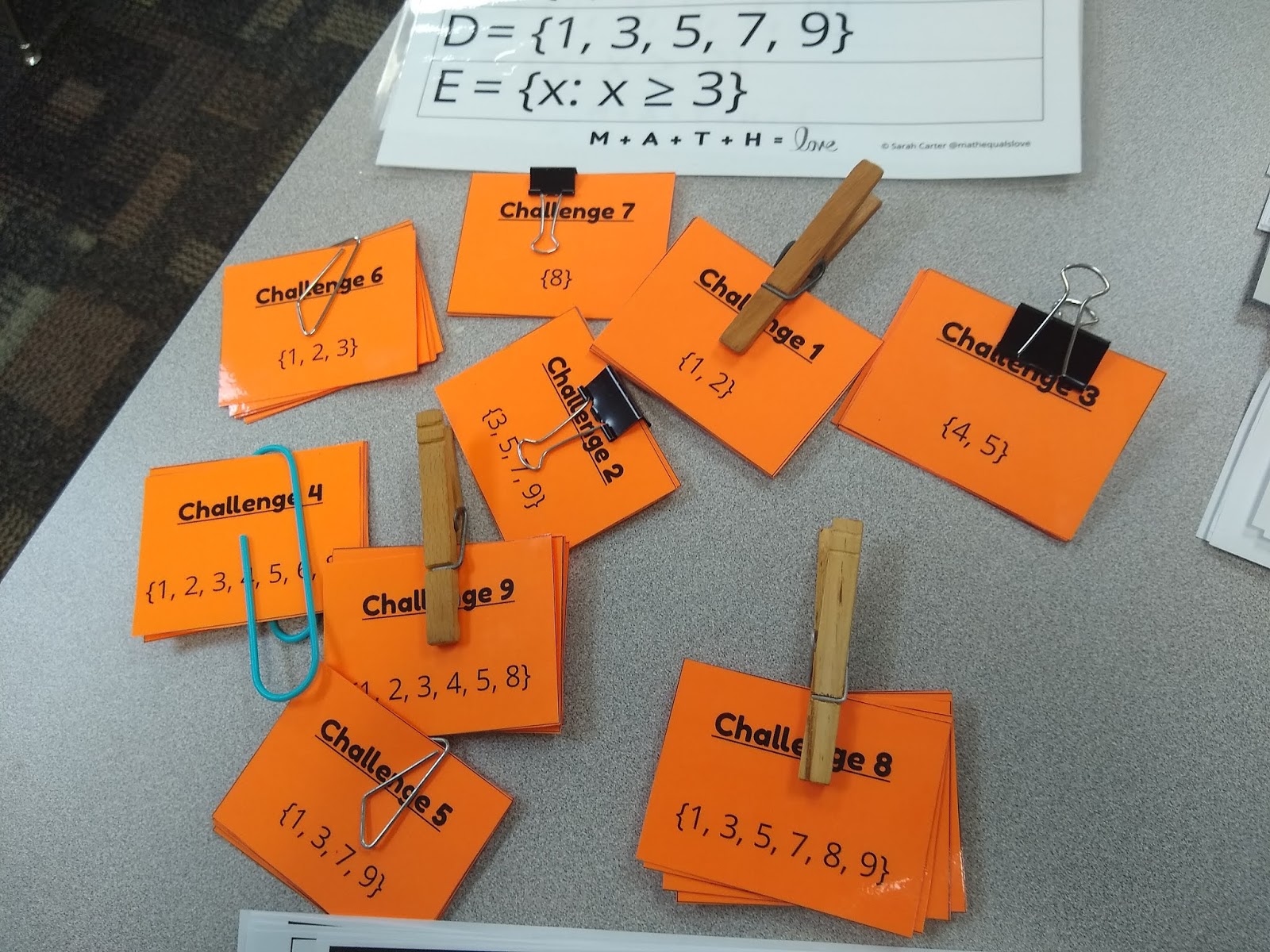
Each of the nine combining sets challenges is printed on a separate card.
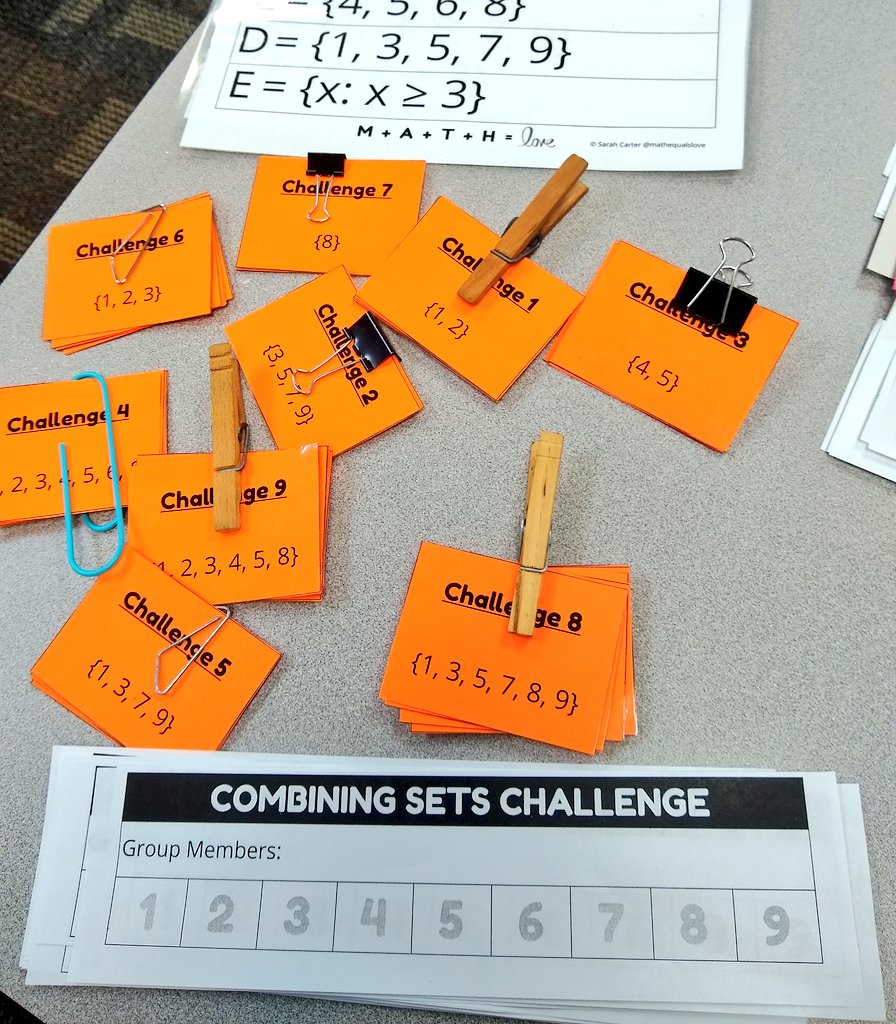
I also gave each group a strip of paper to write the names of their group members on. Then, as each group completed a challenge, I would initial the box of the challenge they had completed or use a hole punch to punch a hole in the appropriate box.

Let’s take a look at an example challenge. We’ll tackle Challenge 3 which is pictured above. Students must find a way to combine the provided sets (A – E) to produce the set {4, 5}. I notice that 4 and 5 are included in both sets A and C. And, conveniently, 4 and 5 are the only numbers included in both sets. Therefore, I can write {4, 5} as A ⋂ C. (The intersection of A and C.)
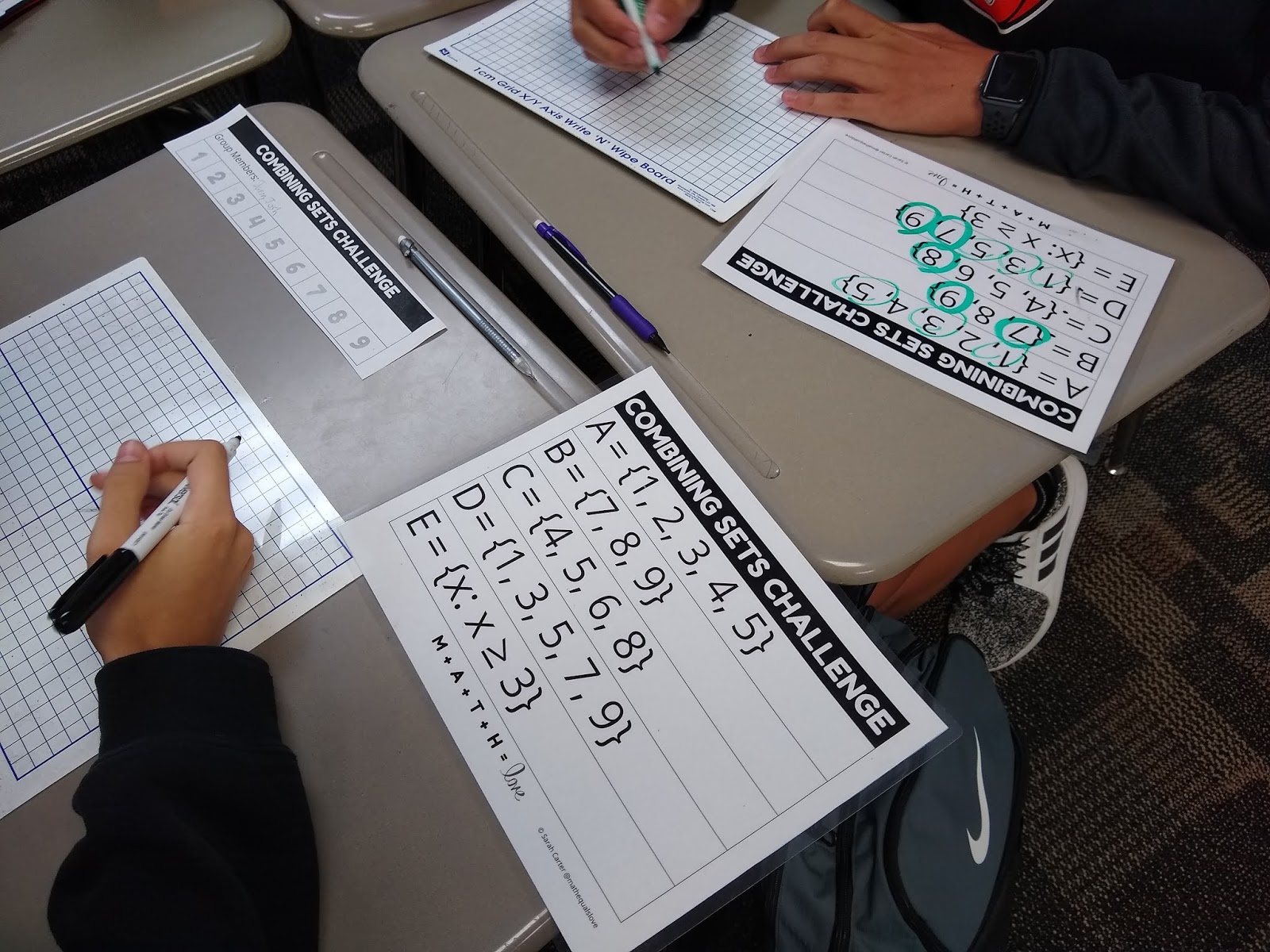
Some of the combining sets challenges have exactly one way to solve them. Others can be solved in several different ways. I am intentionally NOT posting an answer key to these nine challenges here because I know from my own students how google-happy they can be when presented with a challenging task.
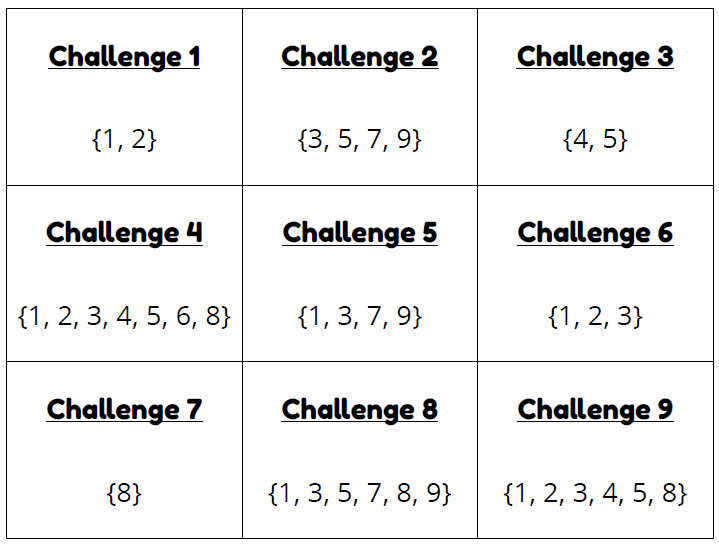
I highly, highly, highly recommend that you work through ALL nine combining sets challenges yourself before using this activity with students.
My students really enjoyed this combining sets challenge activity. They might have been a little frustrated at the fact that one of the challenges required them to combine THREE different sets. GASP.
Activity Solutions
Activity and worksheet solutions are available on a password-protected solution page. I do not openly post the answer keys because one of my goals as a resource creator is to craft learning experiences for students that are non-google-able. I want teachers to be able to use these activities and resources in their classrooms without the solutions being found easily on the Internet.
Please email me at sarah@mathequalslove.net for the password to the answer key database featuring all of my printable puzzles and math worksheets. I frequently have students emailing me for the answer key, so please specify in your email what school you teach at and what subjects you teach. If you do not provide these details, I will not be able to send you the password.

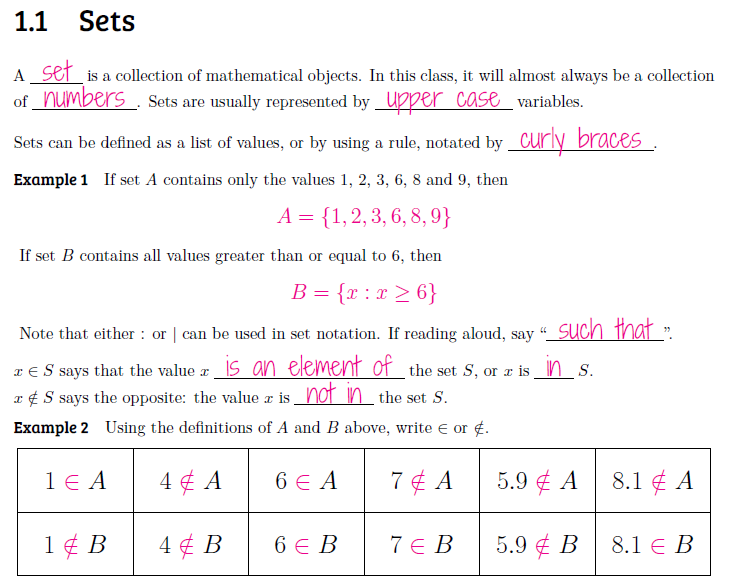

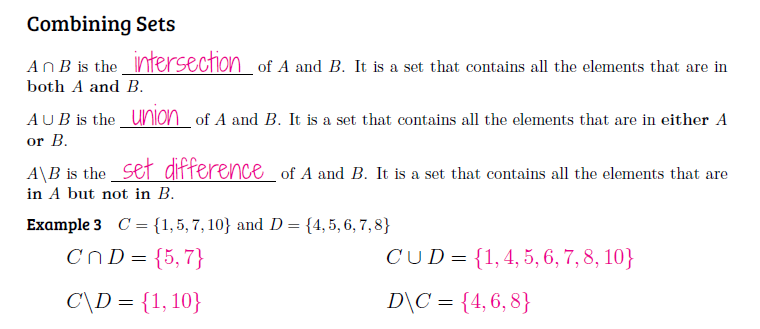
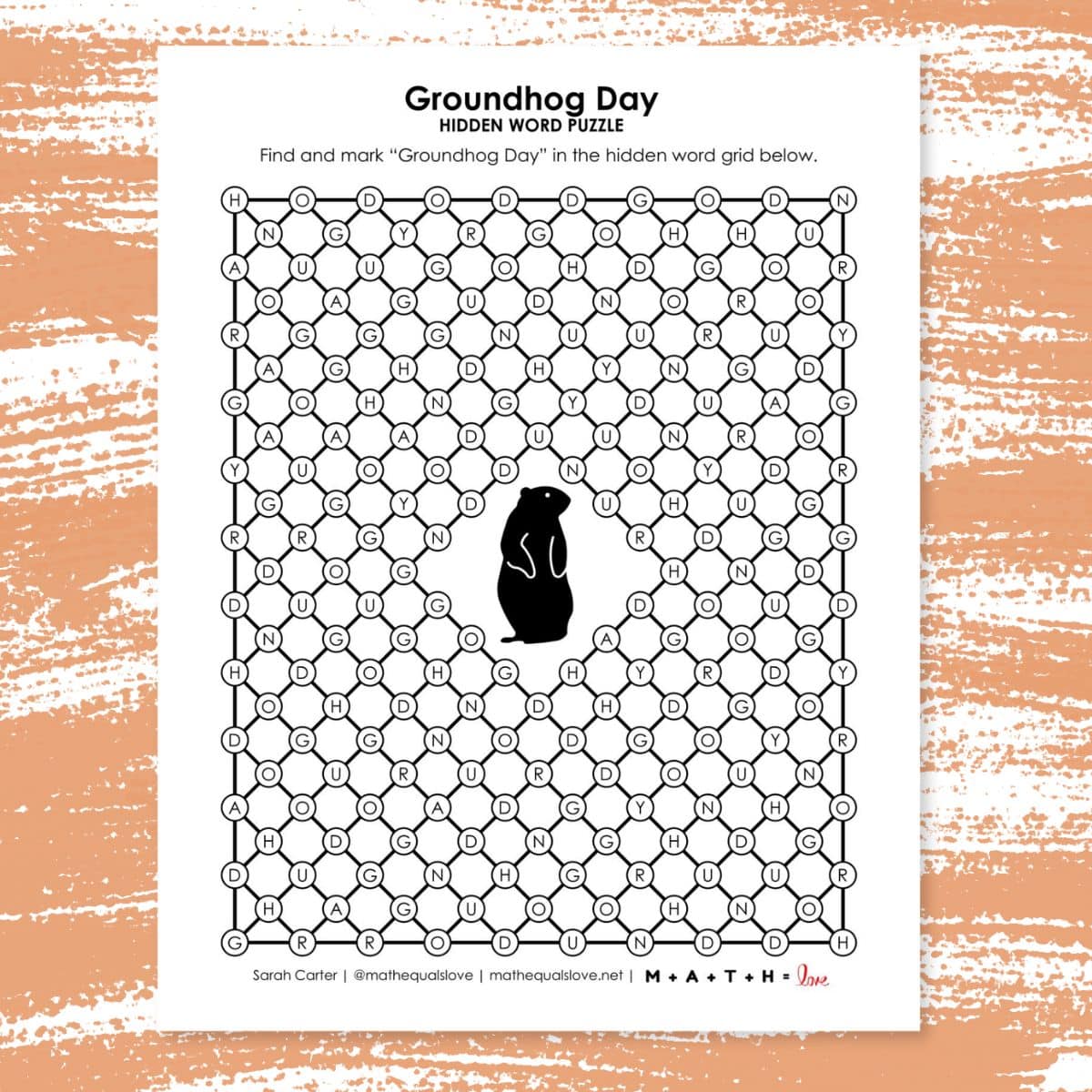
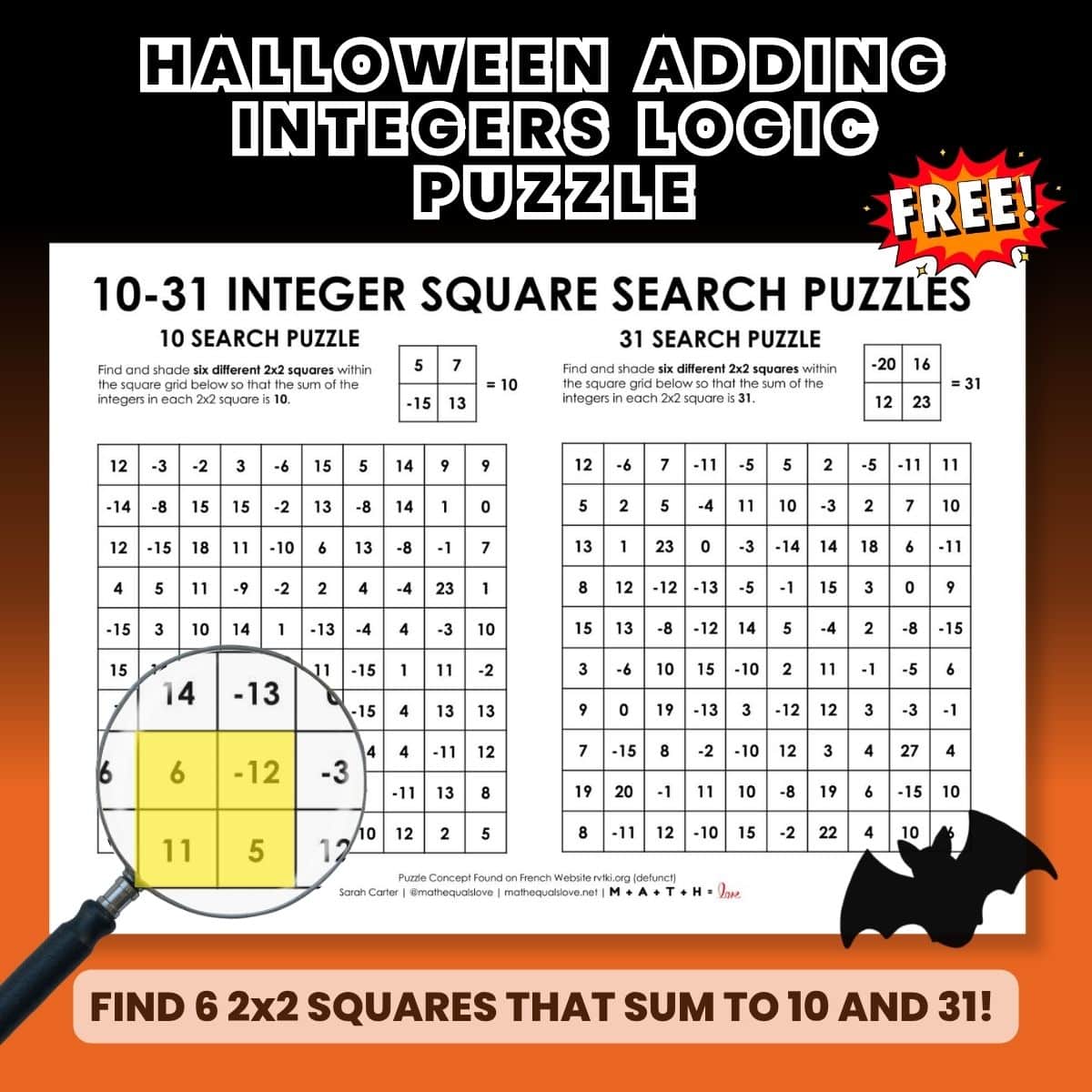
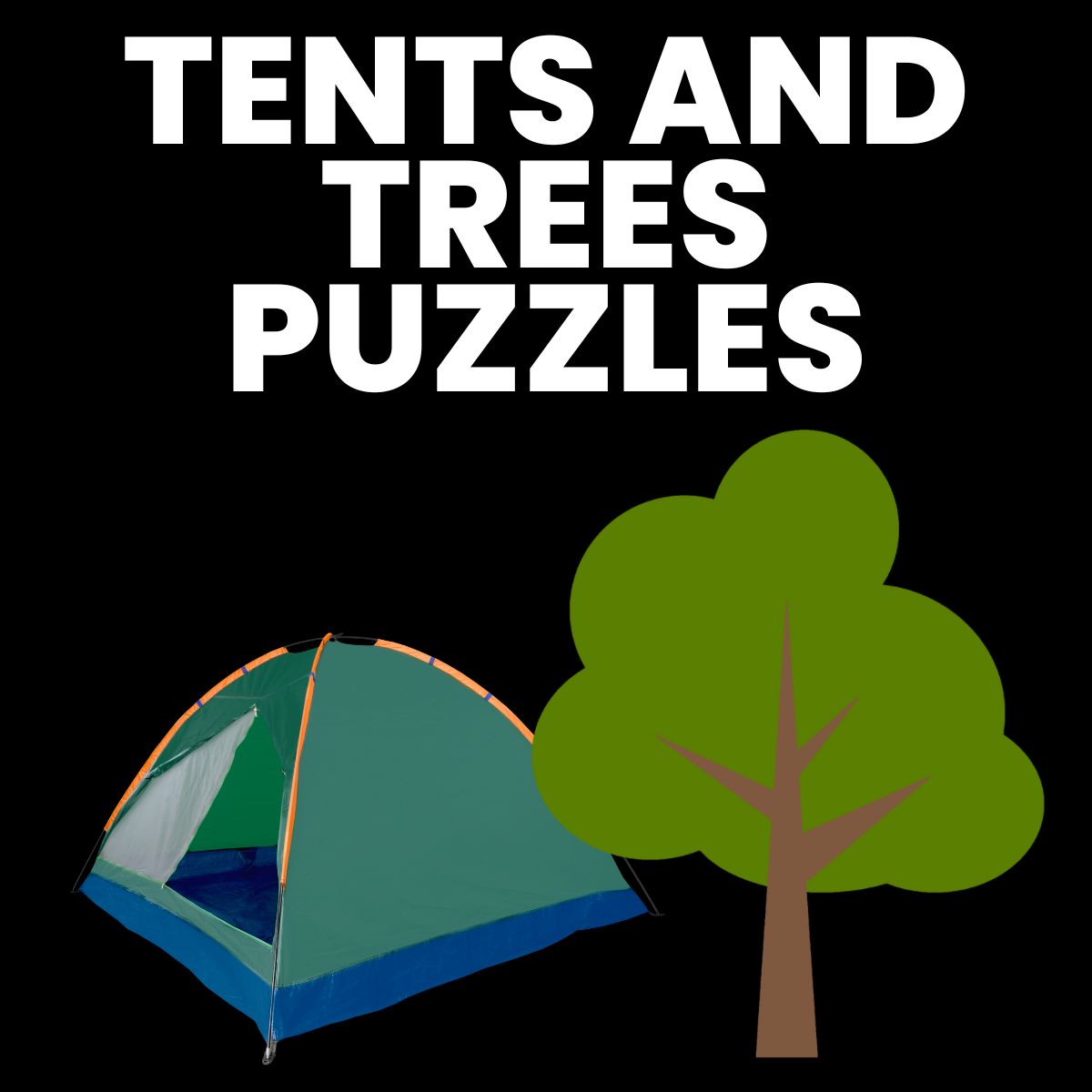
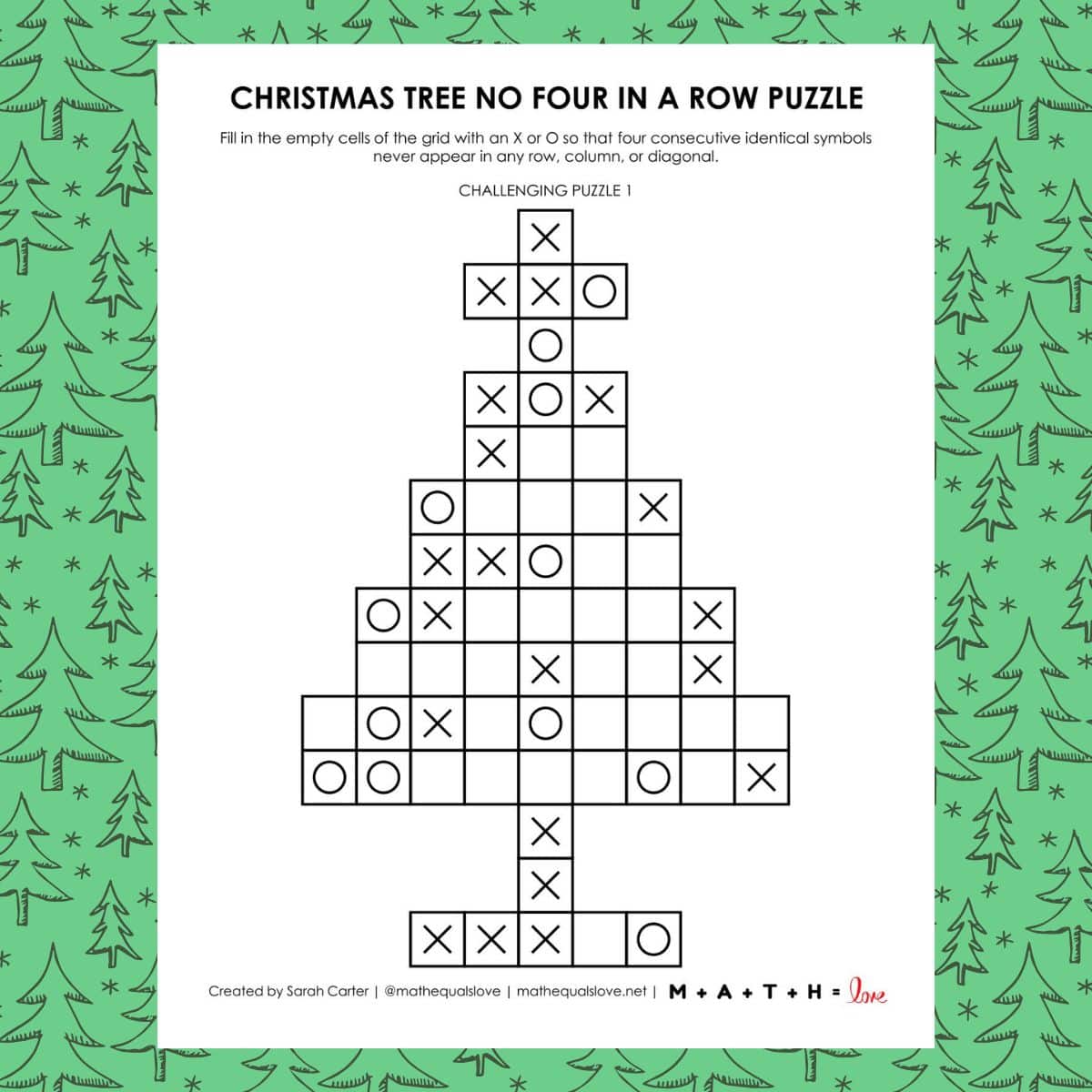
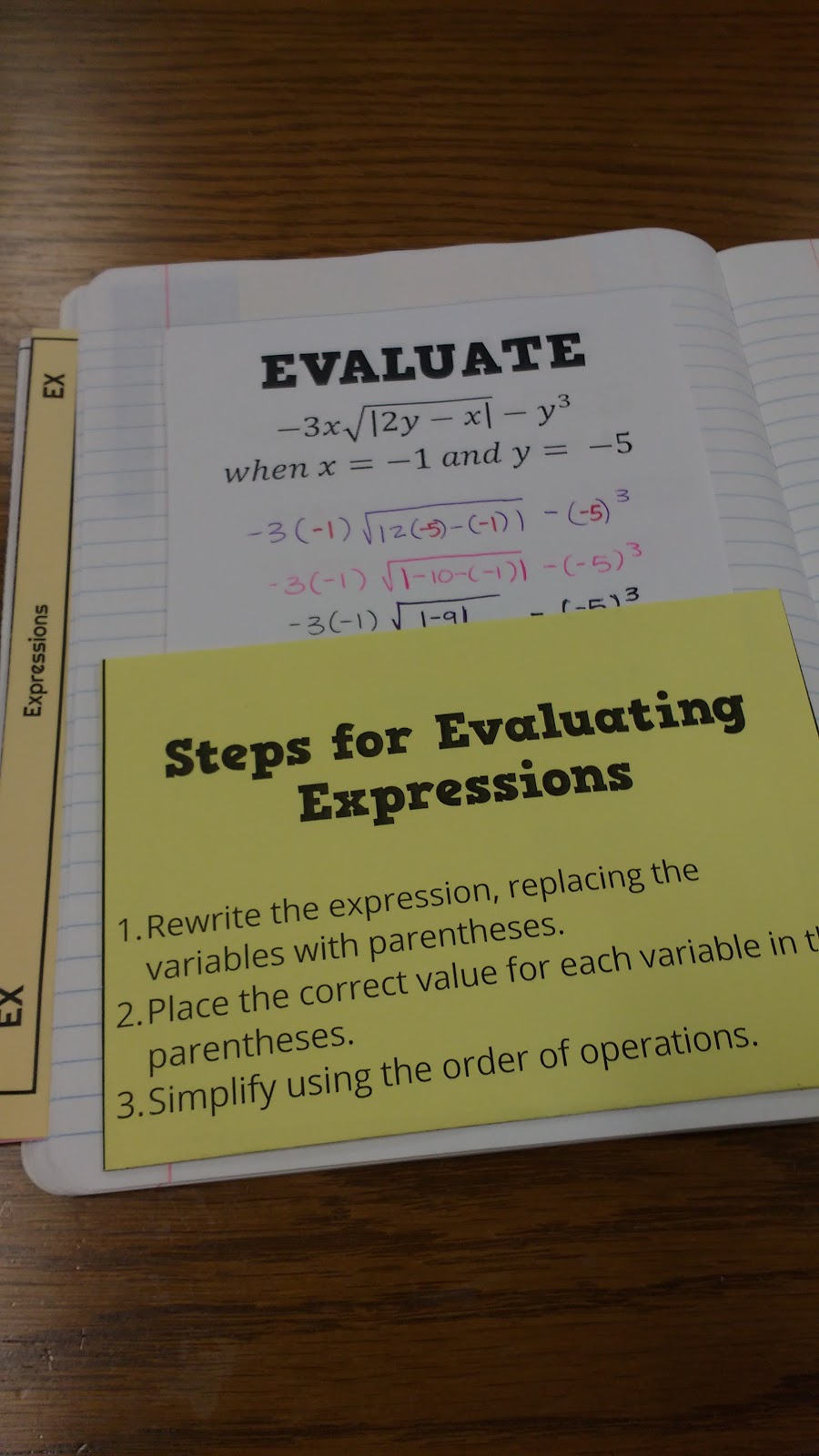

I really like Shaun's fill in the blank notes. A logistics question: do you give the students handouts with the notes? Do they put them in binders or glue them into notebooks? I've been doing guided notes with 3 hole punched handouts for student binders for the past 7 years, but am becoming increasingly frustrated with students who won't use a binder and stuff them all in a folder. So, I'm thinking of switching to notebooks next year – we're changing textbooks, so it seems like a good time to make a change. Also, I sent you a cool puzzle from the New York Times by Twitter message – have you seen these before?